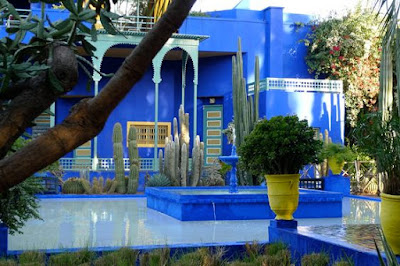Part of our ss17 collection has been inspired by the Jardin Majorelle, a botantical and artistic landscape garden found in Marrakech, Morocco. {*Conditions Apply} drew colour inspiration for its new collection from the 2 acre garden, and particularly from the striking Majorelle Blue colour that is found on surrounding buildings and pots when walking through the garden. It was French painter, Jacques Majorelle, who constructed this garden in 1924 and had discovered the distinct blue colour in various Moroccan tile work, in Berber burnouses and around the windows of local Kasbahs and gave the colour the trademark name of Majorelle Blue.
The Majorelle Blue had inspired us, displaying a vibrant strong extract of colour among softer tones of almond, and so we incorporated hints of this into our new ss17 collection.
After taking 40 years to construct this enchanting garden, Jardin Majorelle is now one of the most visited tourist attractions in Morocco. Jacques Majorelle dedicated his life to developing the garden until his death in 1962. The garden then went downhill and was going to be built upon for a new hotel complex until Yves Saint Laurent with partner Pierre Bergé discovered the garden in 1966 and did everything they could to save it. They successfully managed to stop the hotel project going ahead, bought the garden along with the villa and painters studio that joins it, and gradually brought the garden back to life. The garden today is a great source of artistic inspiration, with its painters studio also having being transformed into a museum for Berber culture, its an endless fountain of rich morrocan culture. {*Conditions Apply} were left in awe and couldn't wait to intergrate the gardens unique colours into the new ss17 collection.



















